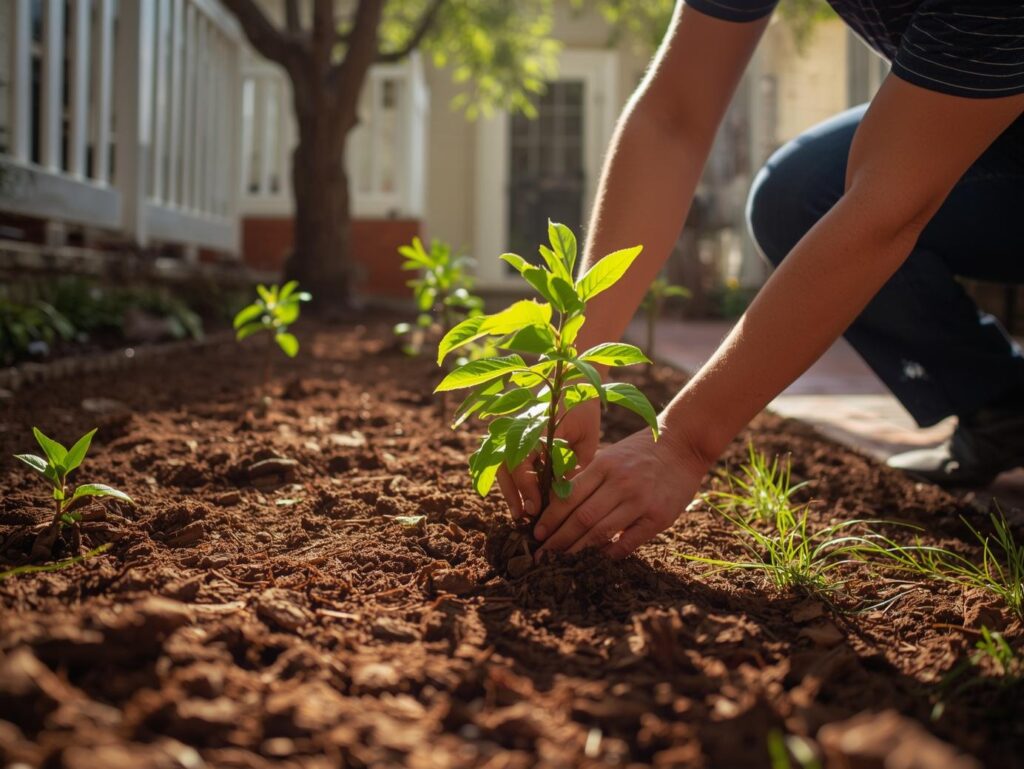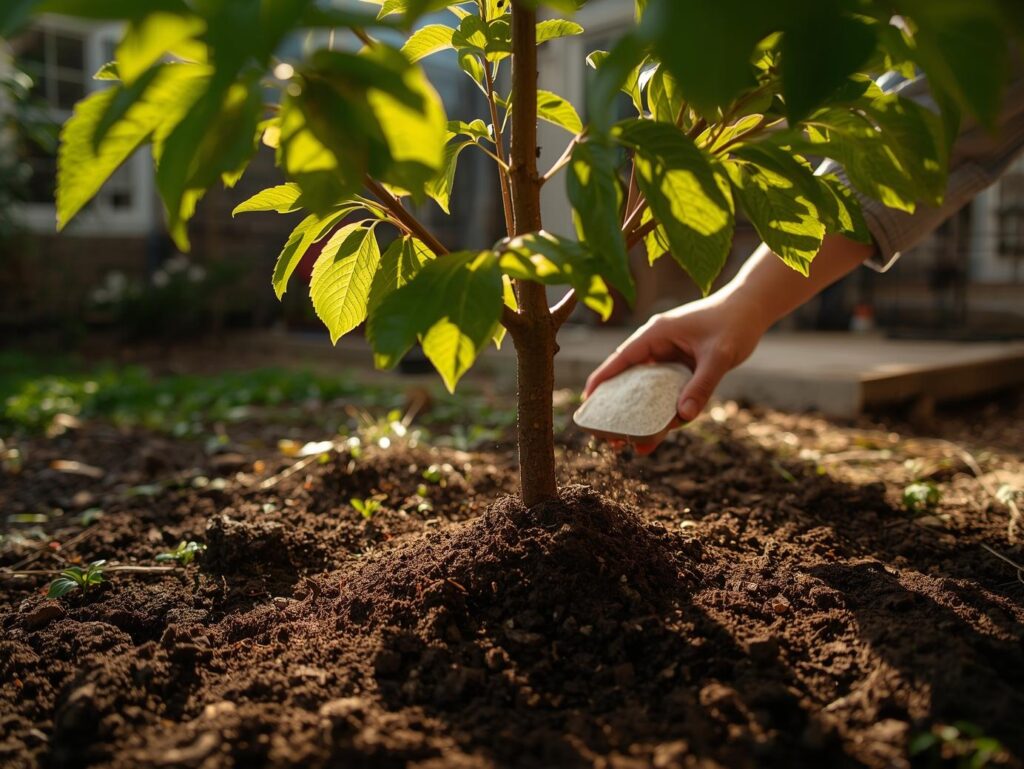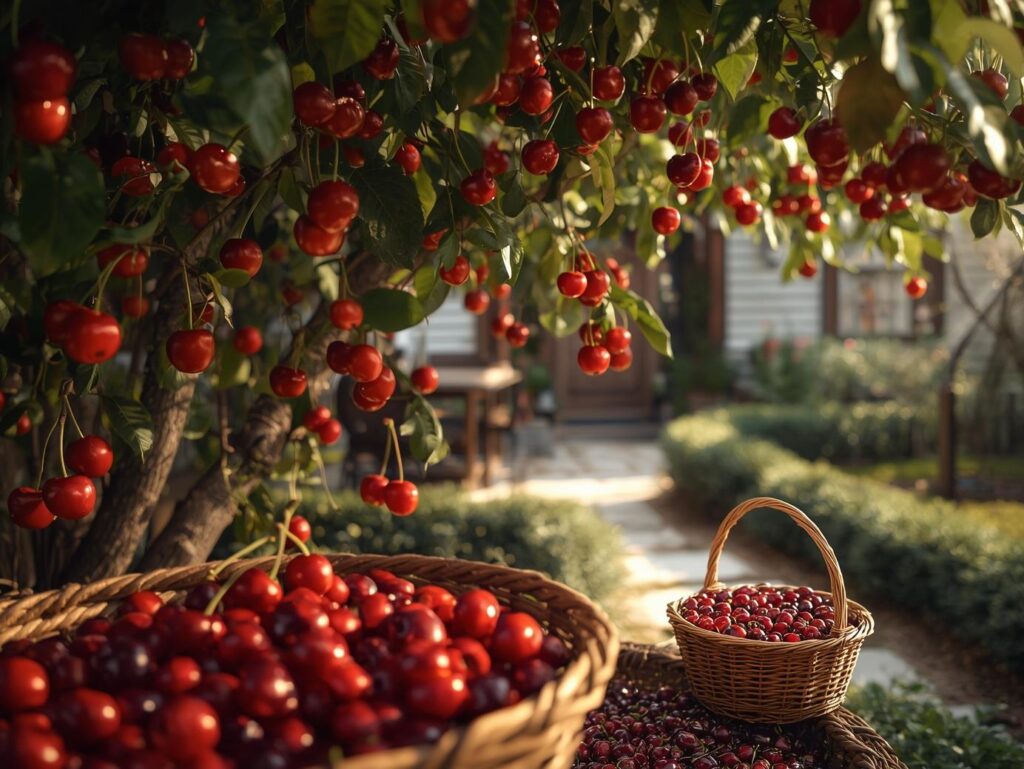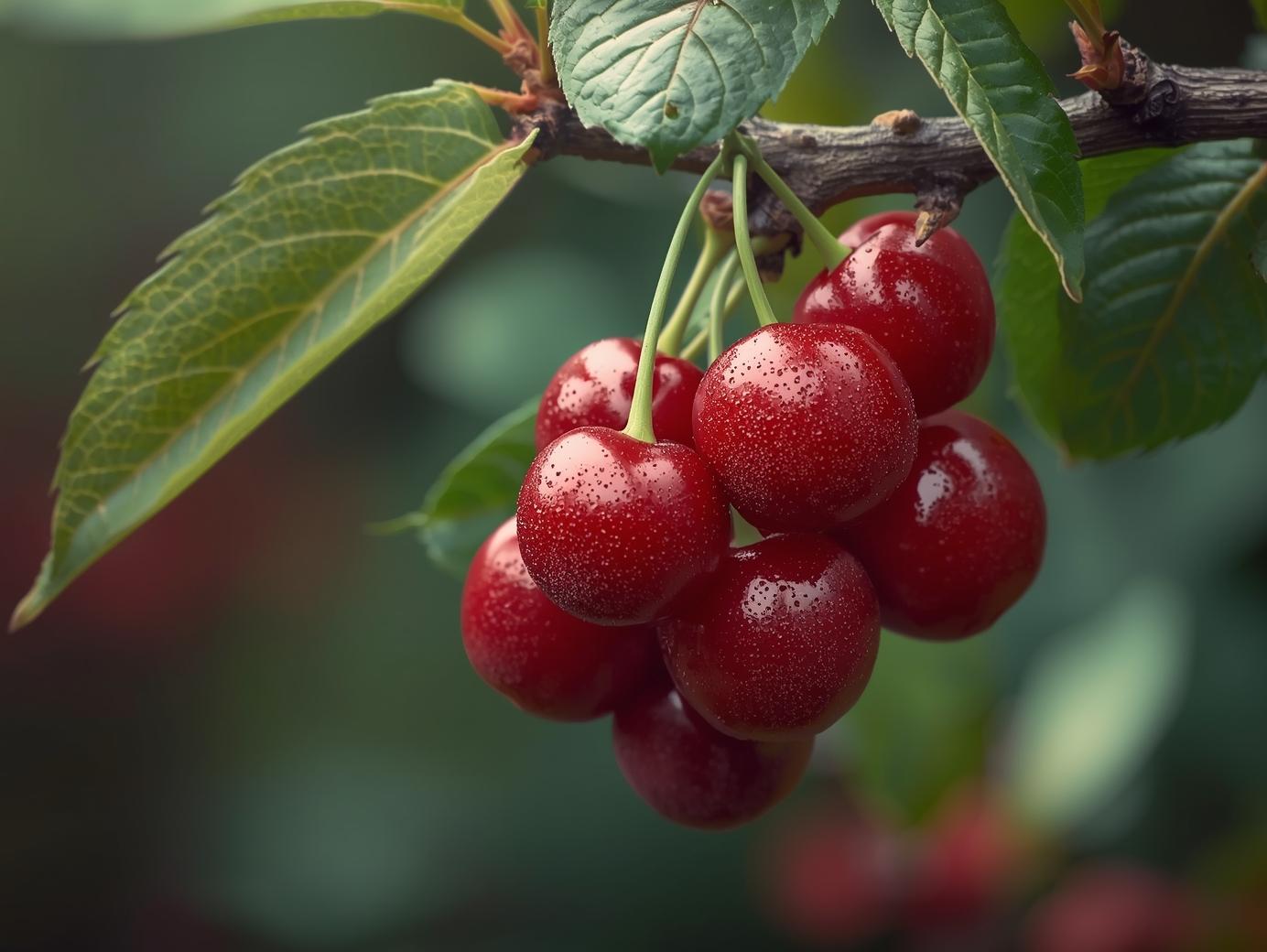Growing cherry trees in your home courtyard can transform your space into a stunning, fruit-bearing retreat. Cherries not only provide a beautiful spring bloom but also reward you with delicious summer fruits. Whether you’re living in the temperate regions of the Pacific Northwest, the Midwest, or other suitable parts of the USA, cultivating cherry trees is entirely possible with the right care and attention. Below is a detailed guide covering every aspect of cherry tree growth, from soil selection to harvest.
Soil Selection
Healthy soil is the foundation of every thriving cherry tree. Cherries prefer well-draining, loamy soil with a slightly acidic to neutral pH level, ideally between 6.0 and 7.0. Avoid heavy clay soils that retain too much moisture, as this can lead to root rot and other fungal issues. If your courtyard soil tends to be compacted, it’s best to amend it with organic compost, aged manure, or peat moss to improve texture and aeration.
Before planting, perform a soil test to determine nutrient levels and pH balance. Many local agricultural extensions in the USA offer affordable soil testing services. The results will help you decide whether to adjust the pH or add specific nutrients. Well-prepared soil not only boosts early plant growth but also ensures long-term productivity of your cherry tree, setting the stage for years of healthy fruiting.
Site Preparation
Choosing the right location is crucial for cherry cultivation. Cherry trees require full sunlight—at least six to eight hours daily—to promote proper flowering and fruit production. A spot with good air circulation helps reduce the risk of fungal diseases, which are common in humid environments. Ensure the site is slightly elevated or on a gentle slope to allow excess water to drain away naturally.
Before planting, clear the site of weeds, stones, and debris that can hinder root development. If your courtyard soil is shallow, consider creating raised garden beds to provide better root space and improved drainage. In colder regions of the USA, planting against a south-facing wall can offer added warmth and protection from frost. Proper site preparation ensures your cherry tree adapts quickly and grows vigorously.
Planting
Planting cherry trees at the right time and depth is vital for success. The best planting season in most parts of the USA is early spring, just after the last frost, or in early fall when the soil is still warm. Dig a hole twice as wide as the root ball but only as deep as the roots. Gently spread the roots out and position the tree so that the graft union—the swollen area where the tree was grafted—is about two inches above the soil line.

After placing the tree, backfill the hole with the excavated soil mixed with organic compost. Water thoroughly to help settle the soil and eliminate air pockets. Avoid adding fertilizer immediately after planting, as young roots are sensitive to strong nutrient concentrations. A well-planted cherry tree establishes more quickly, setting the foundation for healthy growth in the seasons ahead.
Watering
Consistent watering is key to developing a strong root system, especially during the first few years. Cherry trees prefer deep, infrequent watering rather than shallow, frequent sprinkling. This encourages roots to grow deeper, making the plant more drought-tolerant over time. On average, a young cherry tree needs about one inch of water per week, depending on weather and soil conditions.
During hot or dry spells, monitor the soil moisture closely. Overwatering can lead to root rot, while underwatering may cause fruit drop or poor development. Applying a layer of organic mulch around the base of the tree helps retain moisture and regulate soil temperature. Always keep the mulch a few inches away from the trunk to prevent rot and pest infestations.
Fertilizing
Proper fertilization supports strong growth and bountiful fruiting. In the first year, focus on building a robust root system before applying high-nitrogen fertilizers. From the second year onward, use a balanced, slow-release fertilizer formulated for fruit trees in early spring before new growth begins. Over-fertilizing can promote excessive foliage at the expense of fruit production, so moderation is key.
In addition to commercial fertilizers, organic options such as composted manure, bone meal, and fish emulsion provide long-term soil health benefits. For optimal results, perform annual soil tests to determine nutrient deficiencies. Adjust the feeding schedule accordingly, and always water the tree well after fertilizing to prevent root burn and ensure even nutrient absorption.

Pruning & Training
Pruning and training cherry trees help maintain their shape, improve sunlight penetration, and enhance fruit quality. The best time to prune is in late winter or early spring when the tree is dormant. Remove any dead, diseased, or crossing branches to allow for better airflow and light distribution. Training young trees into an open center or modified central leader structure promotes strong scaffold branches capable of supporting heavy fruit loads.
Regular pruning not only improves the overall health of the tree but also minimizes pest and disease risks. Avoid excessive pruning during the growing season, as this can stimulate unwanted new growth that may not harden before winter. Proper training from an early stage ensures a manageable tree size, making maintenance and harvesting easier in courtyard settings.
Pest & Disease Control
Cherry trees can attract several pests and diseases, including aphids, cherry fruit flies, and fungal infections like brown rot. Regular monitoring is essential to detect problems early. Encourage beneficial insects such as ladybugs and lacewings to naturally control pest populations. Applying horticultural oils during the dormant season can help reduce overwintering pests and eggs.
Good cultural practices play a major role in disease prevention. Prune regularly to maintain airflow, remove fallen leaves and fruits, and avoid overhead watering to reduce fungal spread. In severe cases, use approved organic or chemical treatments following label instructions. By combining preventive care with early intervention, you can protect your cherry trees and enjoy a healthy harvest year after year.
Fruiting & Harvest
Patience is essential when growing cherries, as most trees begin fruiting three to five years after planting. Once mature, trees produce fragrant blossoms in spring, followed by clusters of ripening cherries in early to mid-summer. Keep an eye on color and firmness to determine ripeness; cherries should be plump, fully colored, and slightly soft to the touch.

Harvest cherries carefully to avoid damaging the fruit or branches. Use pruning shears or gently twist the cherries from their stems. Freshly picked cherries can be stored in the refrigerator for up to a week or used immediately in cooking, baking, or preserves. With consistent care and attention, your courtyard cherry tree will reward you each season with vibrant beauty and delicious fruit straight from your home garden.
